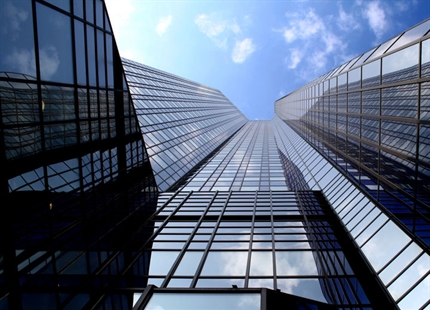Why Humidify?... 5 Important Points for HR Managers to Consider
With balanced relative humidity (RH) levels, working spaces become safer and healthier places to be.
Did you know?...
The average person spends 90% of their life indoors.
Indoor air can be five times more polluted than outside air. Dry stale air can cause physical health problems ranging from itchy eyes, dry throat, headaches, asthma and allergies.
Overview
If your employees are suffering from persistent physical symptoms like sneezing, coughing, runny nose, red eyes and headaches, it might well be a result of poor indoor air quality.
Buildings that are air conditioned during the summer and heated in the winter suffer from low humidity levels if a correct humidification plan is not in place. Prolonged exposure to dry air will affect the health of your staff, increase absenteeism, lower productivity and have a negative impact on equipment and electronics in the building.
One of the first noticeable effects of dry air is electrostatic shocks, which occur below a threshold of 40% RH. Other less recognizable effects that can have a huge impact on the performance of employees include a dry throat that can affect the voice, dry itchy skin, contact lenses prematurely drying out and causing discomfort, sore eyes and an increase in dehydration.
Tests have shown that the transmission of airborne viruses, such as influenza, are also greater at a low humidity level. Maintaining optimum humidity levels within your work space will reduce airborne transmissions and reduce absenteeism.
1. Humidification and Evaporative Cooling
It is important for all buildings to have controlled humidity levels. The recommended level of humidity for human health is between 40-60% RH. With balanced relative humidity (RH) levels, work spaces become safer and healthier places and provide benefits to the occupants including reducing influenza and airborne infections, minimizing dry eyes and throats, and improving productivity.
2. Keep Employees Efficient, Healthy and Comfortable
Employees are your most precious asset! A successful business needs a workforce that is not just motivated and efficient but also healthy.
Recent studies have shown that air humidity is the most important element of indoor climate in terms of its impact on health. Survival time and transmission of viruses and the immune defence of our mucous membranes both are crucially influenced by air humidity. When buildings are consistently humidified for balanced RH conditions, people are less susceptible to health risks and discomfort. Influenza and other bacterial particles spend less time airborne under proper humidity conditions, making it more difficult for infections and illnesses to spread.
This is crucial in environments like office buildings, where large numbers of individuals work together in close proximity and interact with each other on a regular basis.
Dry air can also result in employees having a dry, sore throat. For employees of office buildings, who spend the majority of their day working at a stationary desk, this can impact their work day productivity and result in employee absenteeism. Skin and eye irritation is also reduced when indoor environments are properly and consistently humidified.
3. Safeguard Against ESD Risks
When RH levels are too low, surfaces can collect static electricity and discharge it when contact is made with an individual or another object. By maintaining a relative humidity level (RH) of 40-60% the moisture content of the air serves as a natural conductor which results in potential static charge to be earthed.
4. Protect Against Damage to Equipment
Having RH levels too high will introduce excessive moisture to the environment, raising the risk of short-circuiting systems and wires (this is due to corrosion on electronics exposing components, which can lead to fires. Low RH can produce conditions that are too dry, encouraging static shock, wire fraying and damage to fragile components. Minimize expenses related to replacing shorted-out or damaged equipment with proper humidification.
If your employees are suffering from persistent physical symptoms like sneezing, coughing, runny nose, red eyes and headaches, it might well be a result of poor indoor air quality.
Buildings that are air conditioned during the summer and heated in the winter suffer from low humidity levels if a correct humidification plan is not in place. Prolonged exposure to dry air will affect the health of your staff, increase absenteeism, lower productivity and have a negative impact on equipment and electronics in the building.
One of the first noticeable effects of dry air is electrostatic shocks, which occur below a threshold of 40% RH. Other less recognizable effects that can have a huge impact on the performance of employees include a dry throat that can affect the voice, dry itchy skin, contact lenses prematurely drying out and causing discomfort, sore eyes and an increase in dehydration.
Tests have shown that the transmission of airborne viruses, such as influenza, are also greater at a low humidity level. Maintaining optimum humidity levels within your work space will reduce airborne transmissions and reduce absenteeism.
5. Greater Workplace Efficiency
By humidifying work spaces with proper humidification, you will experience greater workplace efficiency and performance through reduced absenteeism and greater employee comfort.
As well, Condair’s humidifiers offer unprecedented energy efficiency and, with evaporative cooling, greater savings on cooling loads for applications that have excess heat. It will be easier to save on cooling in an electronics rich environment with excess heat gains.
Condair manufactures a comprehensive range of humidifier and evaporative cooling systems across all humidification technologies that are ideal for office buildings and many types of work spaces. Whether for people or equipment, Condair’s humidification engineers are able to provide the right solution to meet the needs of every environment.
Contact us today and ensure you have the best humidification solution for your facility.




